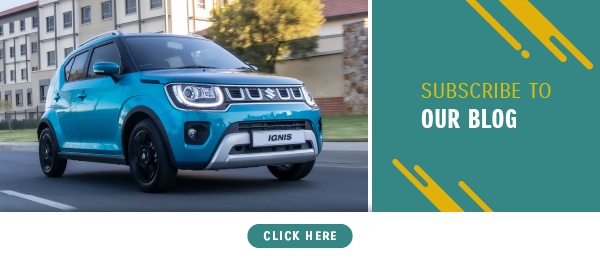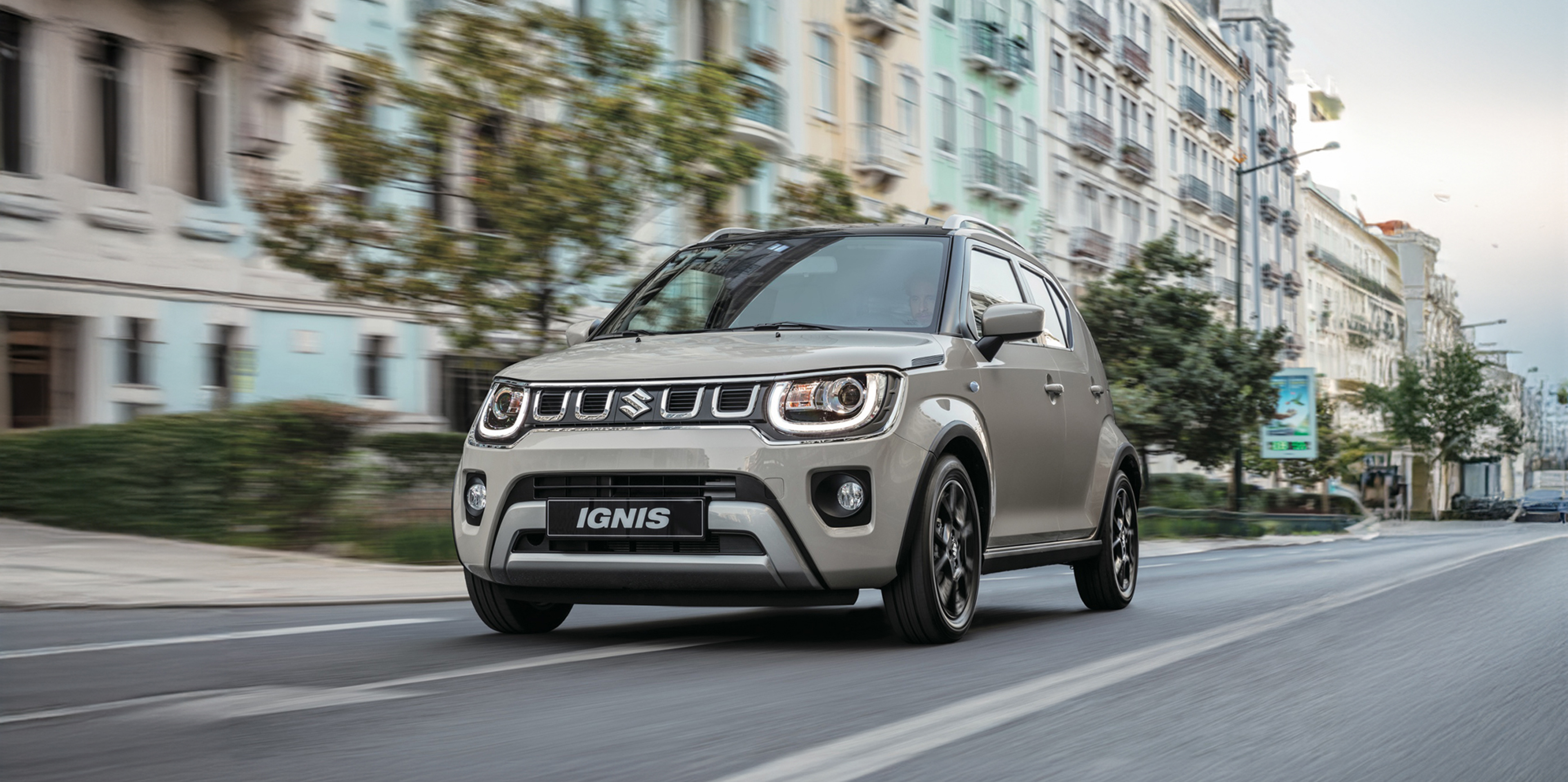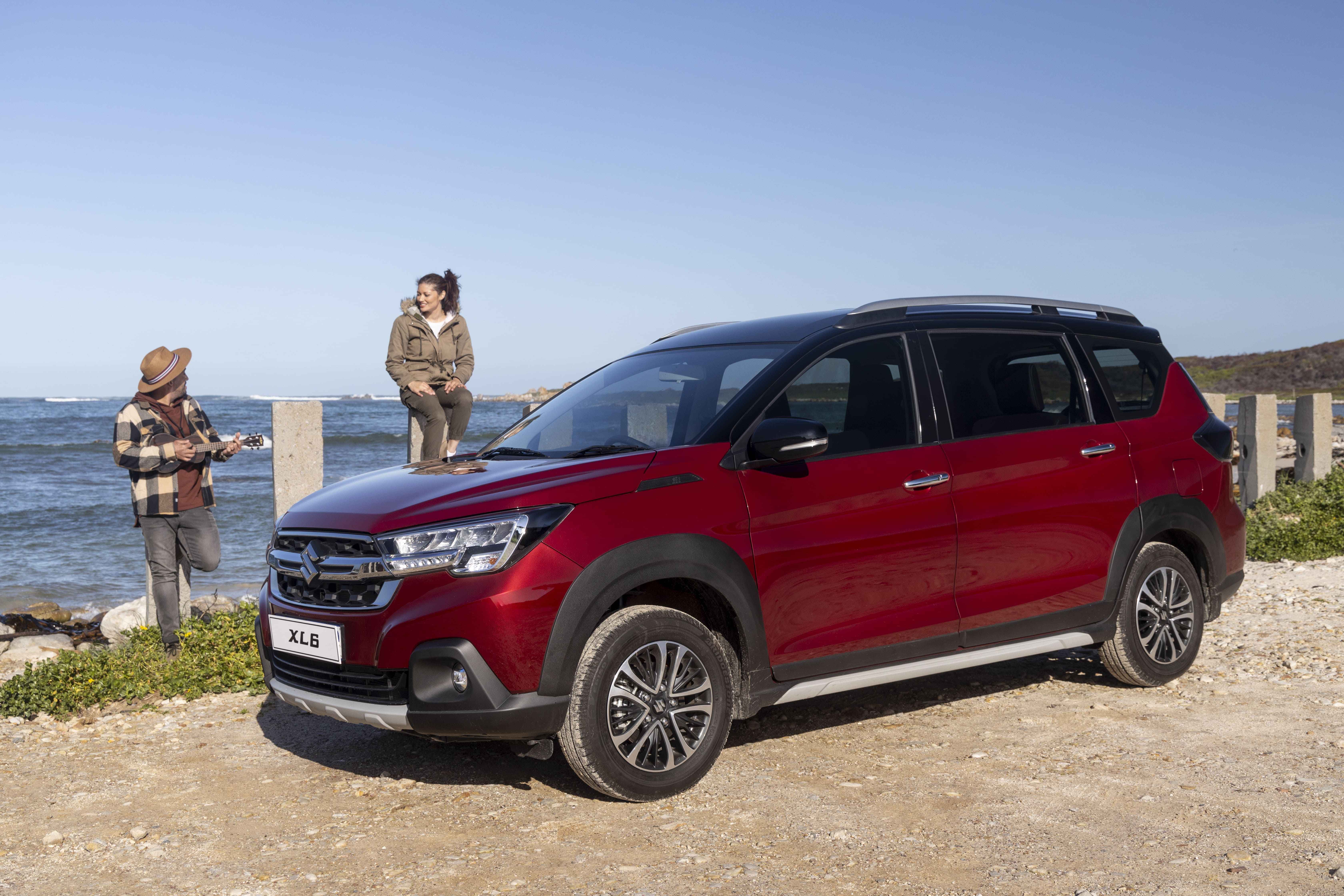.png?width=1074&name=Untitled%20design%20(60).png) There are plenty of features, settings and tasks on cars that may sound overly complicated to use or set up, but they’re actually not all that bad. We take a look at seven things that are a lot easier than you’re led to believe.
There are plenty of features, settings and tasks on cars that may sound overly complicated to use or set up, but they’re actually not all that bad. We take a look at seven things that are a lot easier than you’re led to believe.
1. Setting up your Android Auto / Apple CarPlay quick sticks
A friend bought a car a few months back that had Apple CarPlay and Android Auto as a standard feature, but when we drove somewhere together she had her phone connected via Bluetooth. Asking why she wasn’t using Apple CarPlay for her iPhone, she replied: “It’s too complicated to set up”.
Now if she had bought a new Suzuki she wouldn’t have that problem because a Suzuki salesperson would have gone through the car and features with her and shown her how easy it is to set things up with Suzuki’s 7" touchscreen infotainment system. It’s as simple as visiting the Google Play Store for Android and searching for the CarPlay App, downloading and opening it, or simply plugging in your iPhone to get CarPlay going.
You then connect the phone to the infotainment system via high quality, certified USB cable. The cable supplied with your phone would be most preferred. The systems will see each other and ask for confirmation to connect; once you give permission, you’re connected. Every time you plug the phone in again, it will automatically connect. This will give you access to your music via apps like Spotify, navigation apps like Waze and Google Maps, your contacts list and more.
- Download the appropriate app
- Connect via a data cable
- Follow the on-screen prompts to allow connection
- Tailor user settings to your preferences
2. Changing a tyre - A not-so-daunting-task
Changing a tyre can be a daunting task, especially if you’re in unfamiliar surroundings. Luckily it’s easier than you think, and your Suzuki comes standard with everything you need to complete the task. In the boot, under the carpeting, you’ll find the spare wheel that should be fully inflated, a wheel spanner and a jack.
One thing you may not have is a chock, which is a small wedge that you jam under the opposite side and end tyre to help prevent the car from rolling forward once jacked up. If you don’t have one, you can find a brick or large stone to do the same, but the job can be done without one if absolutely necessary.
You’ll need to be on as flat a surface as possible though. Make sure to take out all the tools and spare tyre you need and set them near you within reach. There are jacking points near each wheel arch. If you can’t see or feel them, the Owner’s Manual in your cubby hole will show you. Loosen the wheel nuts (if too tight, you can stand on the spanner to help) before jacking up. Once you do jack up the car, make sure the tyre is a couple of centimetres off the ground, remove the wheel nuts and pull the wheel off.
For added safety, you can lie the wheel sideways under the car near the jack. Fit the spare wheel and add the wheel nuts, tightening finger-tight in a criss-cross pattern. Lower the car and retighten the nuts with the wheel spanner, adding reasonable force to properly tighten them. It can be a dirty affair thanks to dirt and brake dust, so it’s best to keep a cloth, tissues or wet wipes in the car for just such occasions.
Quick tip: if your spare also happens to be flat, change the wheel anyway. The spare is usually on a cheaper steel wheel with a cheap tyre and it’s better to let that take all the damage from a slow drive to safety than damaging your regular-sized steel or alloy wheel. There are various ways to tackle the job of changing a tyre.
- Find a safe spot to work on the car
- Remove and assemble tools
- Loosen wheel nuts
- Place chock, jack up the car, remove the wheel
- Replace the wheel and wheel nuts
- Lower the car and properly tighten the wheel nuts
3. Which side is the petrol filler cap again?
How many times have you pulled into a petrol station and had to watch the petrol attendant tell you which side your filler cap is on? More than you’d like to admit, I’m sure. If you’re driving a new car or a car you’re not familiar with it would make sense.
There’s an easy trick to get it right every single time without fail though. If you look for the petrol tank logo on your instrument cluster, whether next to the gauge needle or on the digital display (model dependant), you’ll see a tiny triangle on one side of it. That’s actually an arrow that points to the side of the car that has the petrol filler cap.
- Locate the fuel gauge logo
- Look closely for the tiny triangle or arrow
- The direction of the arrow is the side your petrol filler cap is located
- If no triangle or arrow appears, the side of the fuel pump logo that has the filler hose should be the correct side
4. Rotating your wheels - you can DIY that
Rotating your tyres sounds like a difficult, time-consuming job, but it’s actually easy to do. The reason we rotate tyres is to prolong their life, and yours really. Tyres on the front wheels turn at different angles and at a different rotation to the rear wheels, and so they wear out in a different manner. Swapping the tyres at set intervals can spread this wear over a longer period of time, ensuring you get the maximum value out of a set of tyres as well as making the most use of the tread.
It pays to take care of your tyres. You can choose a set timeframe to swap the tyres over, like every 10,000 km or every three months, but a visual inspection of the tyre tread is also useful. When the tread wear starts to look uneven with thicker tread on one side of the tyre than the other, a swap may be due. Many tyre sales shops will do a tyre rotation for you, and besides the waiting queue, the job itself will take them all of five minutes.
A home job can be done too, but of course, the time will be a lot longer due to having to tackle one wheel at a time, removing a wheel, fitting the spare and vice versa using the Suzuki-supplied tools.
- Physically inspect tyre wear
- Use a tyre retailer to rotate wheels
- If at home, remove the wheel (as with changing a tyre), use a spare as a placer, take the removed wheel to the opposite side and end and swap them over. Replace the last removed wheel with spare again.
5. Is it service time?
Just like everything else that sees daily use, certain parts in your Suzuki need replacing to keep things in good condition, and so servicing your Suzuki is a must to keep it in tip-top shape. The best way to ensure you get things done on time is to monitor your mileage.
- Check your car’s service records
- Check the mileage since the last service
- Check the elapsed time since the last service
- Book a service accordingly
6. Are you ready for that road trip?
These days, road trips are much better than they were back in the day. There are plenty of routes to get to popular destinations with safe stop-off and fueling points along the way. This makes the task of preparing for a road trip a much easier affair.
Once a destination has been chosen, plotting a route on a navigation app via Suzuki’s 7" touchscreen infotainment system is a good idea. You can select which roads to use and avoid, and even share your route with friends and family so they can digitally join in the fun and also keep tabs on you for added safety.
On the car front, a pre-trip inspection is a must to make sure your Suzuki is both legal and safe. Check that your licence disc is valid. This keeps the traffic police happy and also keeps your insurance valid. Make sure your windscreen wiper blades are in good condition, check that your tyres have the minimum legal tread depth and that they’re wearing evenly, and check if your fuel gauge is giving you the correct readings. There’s plenty you can add to a pre-trip checklist, and it’s far less complicated than you think.
- Identify your destination
- Plan and share your route
- Run through a checklist to ensure your car is legal and roadworthy
7. Getting the hang of car terminology
One thing that can get confusing, simply thanks to the sheer number of topics, is car terminology. There’s an abundance of acronyms that describe all manner of safety systems and features, and many sound quite similar in name and explanation; like Traction Control (TC) and Electronic Stability Control (ESC).
Traction Control is where the onboard computer monitors the drive wheels, and if one rotates faster than the other, the electronics will direct the ABS (Anti-lock Braking System) brakes to slow one wheel to force the speeds to realign. On some models, it limits power delivery from the engine to have the same effect.
Electronic Stability Control monitors the stability and if the car experiences a loss of traction, it will again use the ABS to help regain control of the car. The list can be endless, especially when you look at cars that are higher up on the model ranges that have a bigger features list.
- Check the owner’s manual to confirm model specs
- Find any info you’re not familiar with
- Subscribe to the Suzuki blog and browse content for helpful explanations
- Download the 101 Car Facts eBooks and other helpful guides
Hopefully, we’ve alleviated some anxiety that can go with some of these sometimes complicated motoring topics, and that you’ve learned something new and helpful. There’s always more to learn, which you can do by subscribing to the Suzuki Auto blog. That’s where you can also learn more with our easy-to-read, downloadable, 101 Car Facts eBook.






%20(1).jpg)